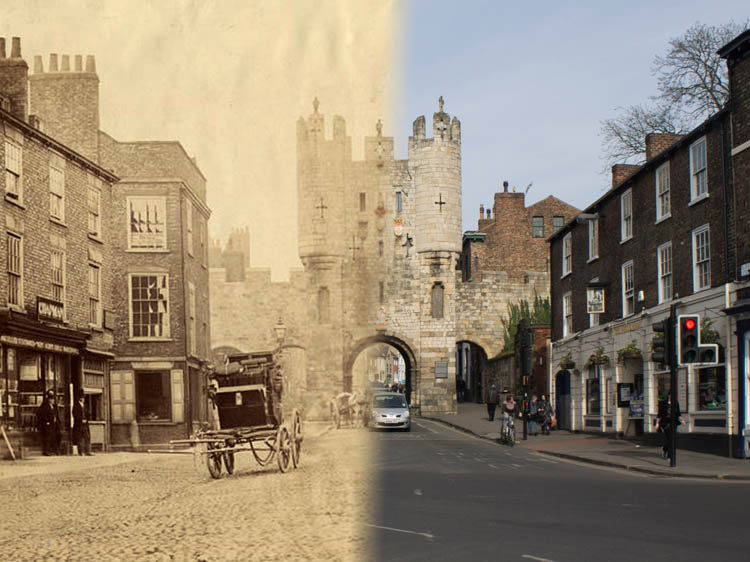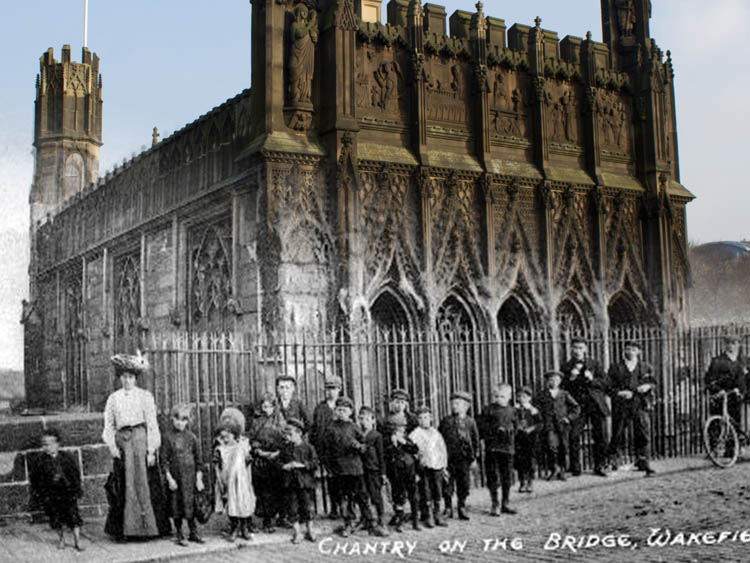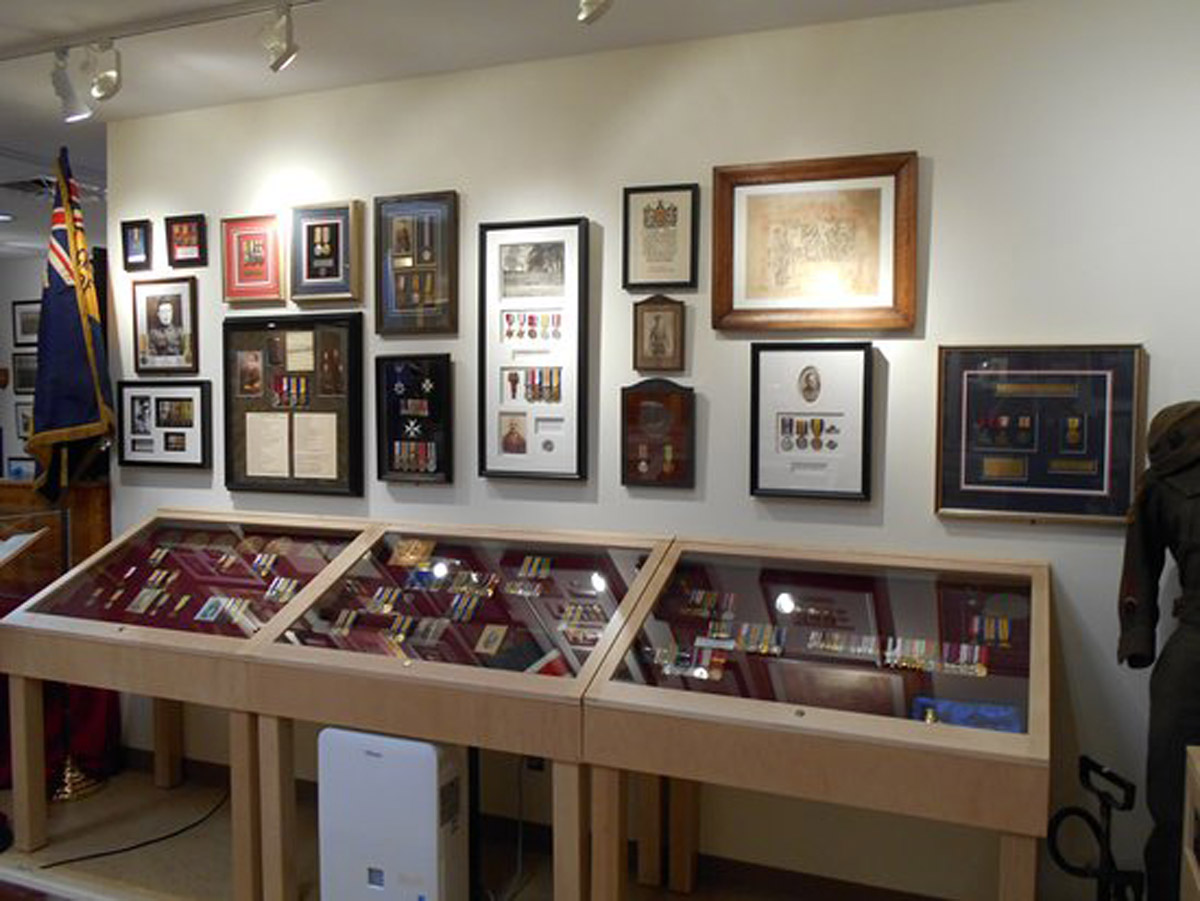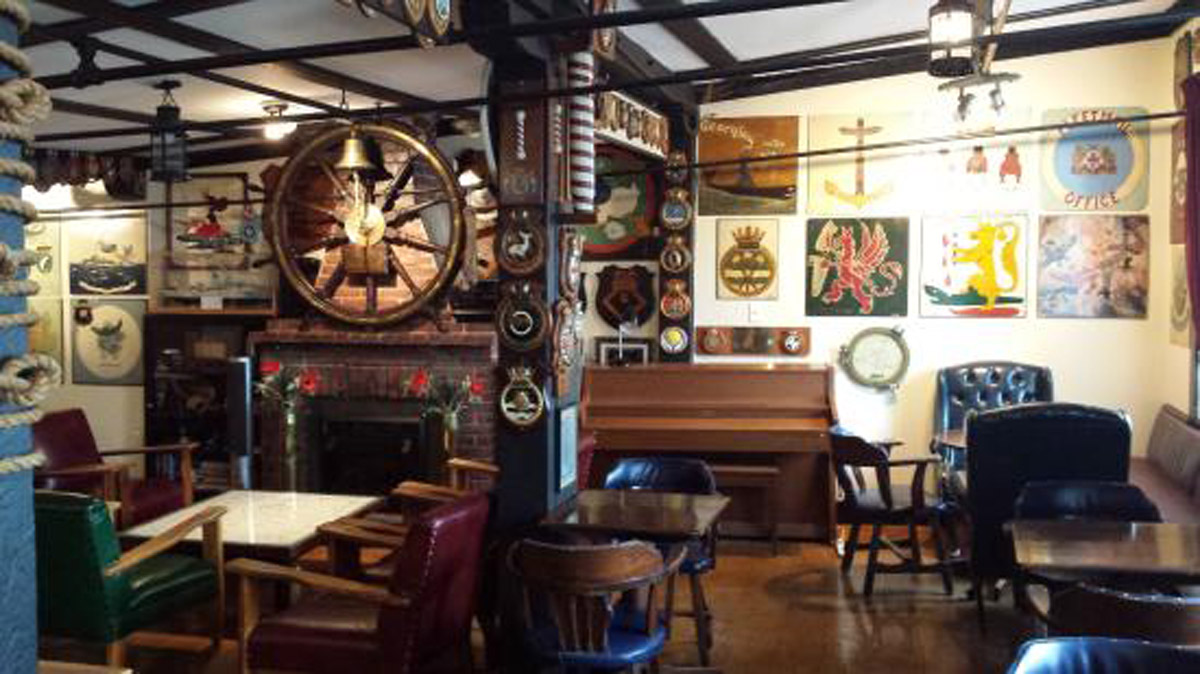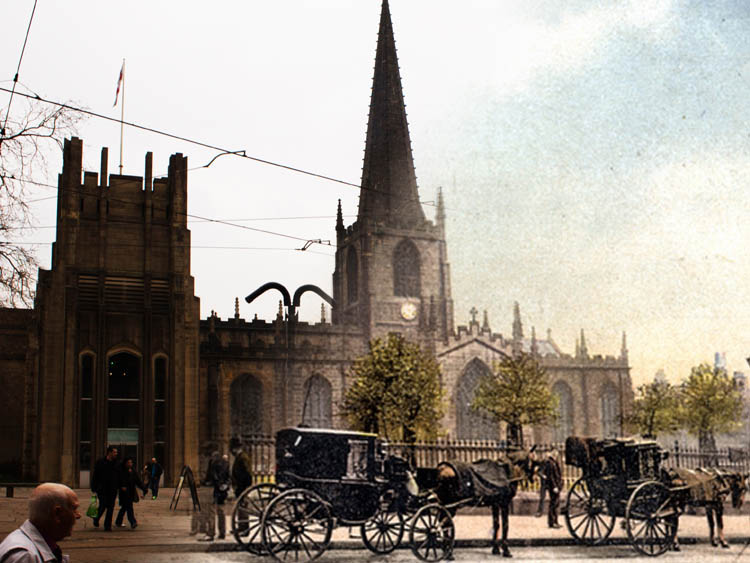Partner City
Newcastle
Coal, ships and steel
Strategically placed at a narrow point along the wide and navigable Tyne, Newcastle was always destined to play an important role in the development of Great Britain. Once an important fort in Hadrian's Wall, Newcastle became an Anglo-Saxon stronghold when the legions melted away. When William the Conquerer led his Normans north he faced stiff resistance from the people here and forces responded by burning, pillaging and generally depopulating the entire region. Soon after a castle was built to cement Norman rule over the lands (from which Newcastle gets its name). The imposing Castle Keep, which continues to dominate the city's skyline, was a newer castle built a bit later. This castle played an important role in the Middle Ages, often acting as England's front line in the continual wars against the Scots. In the succeeding centuries it was coal that would come to define Newcastle. The black rock became a popular source of heating Northumbria had no shortage of the stuff. Soon Newcastle became a byword for coal and the phrase "Taking coal to Newcastle" became synonymous with saturation. Colliers plying the 'Coaly Tyne' were the region's economic engine and the wealth and population of England's north finally began to recover after the devastating Harrying of the North of the Norman Period. It is hardly surprising then that Newcastle became a central focus of Britain's transformative Industrial Revolution. The Tyne rapidly became crowded with shipyards, steel mills and coal export terminals. Key developments in railways and locomotives were pioneered by Geordies, as Newcastle's inhabitants became known. A seemingly trivial invention, George Stephenson's mining lamp, revolutionized coal mining and helped spur more rapid extraction of this increasingly valuable resource. The pace of development quickened. In the 1840s the High Level Bridge was built, the first major two-decked bridge in history which, along with the castle keep, continue to dominate the city's skyline to this day. The shipyards along the Tyne churned out cruisers, dreadnoughts, battleships and aircraft carriers, the standards of global power. Virtually all the ships of the Japanese Navy that defeated the Russians at Tsushima in 1905 were forged on the Tyne. In the 1820s a partnership between the builder Richard Grainger and the architect George Dobson saw the creation of much of what we know as Newcastle today. The Royal Arcade, Eldon Square, the Central Exchange and Grainger Market all owe their existence to this famous duo. Newcastle increasingly saw itself in competition with London, and rowers from the Tyne competed for glory with those from the Thames. As the 20th Century wore on the shipyards, armaments works and coal mines that characterized the region fell into decline. Deindustrialization hit Newcastle as hard as any city in Britain. Controversial building schemes in the 1960s saw the destruction of large tracts of historic architecture in the city centre. The once bustling quaysides became derelict. Yet ambitious building plans in the 1990s and 2000s have given the city a new lease on life. The quays are now home to upscale shopping areas, restaurants, office blocks. Today the city is renowned for it's universities, night life, and environmental activism. I for one loved my short stay in Newcastle, as well as the communities at the mouth of the Tyne, and hope I get an opportunity to return.
Explore
Newcastle
Then and Now Photos
HMS Monarch
Newcastle Libraries Accession Number 062612
1911
The HMS Monarch passing the Tyne Bridges on its way to Elswick arsenal just upriver from Newcastle. Lord Armstrong is generally recognized as the inventor of modern artillery and his massive arsenal armed thousands of ships.
View of Downtown
Newcastle Libraries Accession Number 046468
1868
The heart of Newcastle from Gateshead. The High Level Bridge dominates the photo. That bridge, completed in 1849, was the world's first major two-leveled bridge and saw the pioneering use of many new iron-working and engineering techniques. In the foreground of the old photo a family appears to be enjoying a day out in the park that occupies the spot to this day.
Industrial Newcastle
Newcastle Libraries Accession Number 013065
1823
Soldiers and people relax on the hills above the Tyne. Some waving to the busy maritime traffic on the waterway. Three churches and the castle keep can be seen in the background, along with the old Tyne Bridge which would be replaced by the Swing Bridge later that century. In the distance a tower can be seen at the Elswick Lead Works.
Tractor by Central Station
Newcastle Libraries Accession Number 016358
1901
A steam tractor is used to help lay new streetcar lines outside Newcastle's Central Station. Solid rubber tyres would continue to be popular for another 20 years and were only gradually supplanted by the inflatable variety.
Quayside Market
newcastle Museums, Galleries, Archives Reference
1900
A busy Sunday morning on the Newcastle Quayside Market. Evidently the spot was both a place of social gatherings as well as a port.
High Level Bridge
Newcastle Libraries Accession Number 060783
1911
A postcard view of the bridges across the Tyne and the 12th Century Keep.
High Level Bridge From Afar
Newcastle Libraries Accession Number 055259
1872
A shot of Newcastle from Gateshead. Much of Gateshead has left its industrial past behind. Where warehouses and railyards once stood, there are now parks, condos and public buildings.
Tyne Ship Traffic
Newcastle Libraries Accession Number 053701
1885
A ship passes through the Swing Bridge. The bridge replaced a smaller 18th Century bridge on the same spot and was meant to allow vessels to go upstream to Armstrong's Elswick armaments works. Armstrong designed and paid for the bridge, using the same engineering technologies that revolved turrets on battleships. The bridge is still in working order today, though ships rarely pass through it.
Firefighters on Clayton
Newcastle Libraries Accession Number 053701
1930
Firemen appear to have just put out a small fire on Clayton Street and are now picking their hoses from the soaked pavement. A crowd of curious onlookers have gathered. Of curiousity to us is the radically different design of fire engine used at the time.
The 'Coaly Tyne'
Newcastle Libraries Accession Number 003709
1882
An etching by R. Jobling of the River Tyne titled The Coaly Tyne. The Tyne is filled with vessels, many doubtlessly shuttling about Newcastle's primary export and source of economic might, coal. In the background can be seen the High Level Bridge and the fairly new Swing Bridge, while All Souls Church is on the left.
Old Man Friday
Newcastle Libraries Accession Number 030446
1895
A peddlar speaks with a woman. The caption speculates that the man is Francesco Viviana, or Old Man Friday, apparently a fixture of Newcastle around the turn of the last century. In the background is the Grey Monument, built to commemorate Prime Minister Charles Grey, champion of the Great Reform Act of 1832 that redistributed electoral power from the countryside to Britain's rapidly growing industrial cities.
Nighttime Grainger Street
Newcastle Libraries Accession Number 067112
1904
Street cars and fashionably dressed women can be seen in this photo of Grainger Street, which has been hand-coloured for a postcard. It's a busy night.
Building Ouseburn Bridge
Newcastle Libraries Accession Number 714529
1908
Men overseeing the construction of a bridge over the Ouseburn. Notice the steam shovel on the left. On the right is the Glasshouse Bridge.
Decorations on Northumberland
1935
The decorations are out for a royal visit on Northumberland Street.
Trams and Buggies
Newcastle Libraries Accession Number 046779
1910
Trams on the street by Barras Bridge. The memorial to the fallen in the South African War can be seen in the distance. The famous monument on the far left of my photo, The Response, was added a few years later after the trauma of the First World War.
Boer War Monument
Newcastle Libraries Accession Number 666797c
1910
Another photo of Barras Bridge. Today the Haymarket metro station blocks our view of the South African War Memorial and Saint Thomas Church, though the building on the left has not changed.
People on the Side
Newcastle Libraries Accession Number 055599
1895
Another shot of the Side, in this one the Dean Street railway bridge features more prominently. There's no vehicle traffic and pedestrians wander freely across the street. A man on horseback, perhaps a policeman, looks like he's stopped to speak with someone who moved during the exposure.
Newcastle Keep
Newcastle Libraries Accession Number 030483.
1836
For obvious reasons it is not possible to get the same perspective for the Now photo, but the old photo makes plain the juxtaposition of Old (the early train bridge) and very old (the Keep).
Black Gate
Newcastle Libraries Accession Number 003440.
1900
A boy stands in front of the Black Gate.
Women By Black Gate
Newcastle Libraries Accession Number 068259
1884
In a postcard labeled a Quiet Chat, two women evidently have a quiet chat around the rear of the Black Gate. Today the shop fronts have been removed and the land underneath them excavated.
Behind Black Gate
Newcastle Libraries Accession Number 21051a
1931
Another view from the rear of the Black Gate with the steeple of Saint Nicholas Cathedral towering over it all. As we can see this area was built up with shopfronts as recently as the 1930s.
Crowded Omnibus
Newcastle Libraries Accession Number 050155
1922
People pile on to a horse bus about to cross the High Level Bridge. This bus cost a halfpenny until the horse buses were phased out in favour of trams in 1923.
Groyne Lighthouse
Newcastle Libraries Accession Number 065013
1900
A ship shipherded by tugs passes by the Groyne Lighthouse at South Shields. Ships have gotten quite a bit bigger since then. Railway wagons can be seen underneath the site of the Sailing Club today.
Launching HMS Lord Nelson
Newcastle Libraries Accession Number 025915
1906
The launch of the HMS Lord Nelson at Jarrow, the last pre-dreadnought commissioned into the Royal Navy. She was to serve as flagship of the Royal Navy's Mediterranean Squadron for much of the First World War.
Ship Foundering
Newcastle Libraries Accession Number 025668
1898
Men from the Tynemouth Volunteer Life Brigade work to rescue sailors from the barque Diamant that has been wrecked on the Black Middens, the deadly rocks off the North Shields on which dozens of ships met their end.
Black Middens
Newcastle Libraries Accession Number 024288/span>
1895
Tugboats lead a ship past the Black Middens at Tynemouth. Another unfortunate ship, the brigantine Rupert, already lies wrecked upon them.
Fishing Fleet
Newcastle Libraries Accession Number 033089
1890
Herring Boats moored at the North Shields pier. Though fishing technology has changed, much else has remained the same.
Tyne Harbour
1902
A view of the lighthouse nicknamed Little Light overlooking Tynemouth's fishing quay.
Tynemouth Pier & Castle
Newcastle Libraries Accession Number 062652
1890
People relax on Tynemouth Pier. Overlooking the bluff are the imposing ruins of the Tynemouth Castle and Priory.
































































